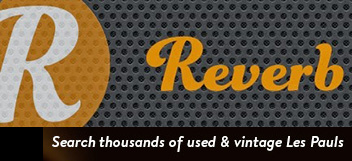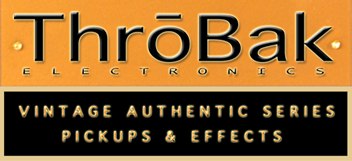MisterMiniMite
New member
- Joined
- Jul 12, 2003
- Messages
- 292
I've been messing around putting this article together, on and off, for months now. I figured, what the hell, it's not perfect, not 100% polished, but the information is the most important thing... Sorry for the delay  Special thanks to Glenn Buckley for all the great information (and for reviewing this draft for accuracy!).
Special thanks to Glenn Buckley for all the great information (and for reviewing this draft for accuracy!).
Sweet Marshall O’ Mine Part 2: The Breakthrough - Case Closed!
You might recall my article titled “Sweet Marshall O’ Mine?: The Untold Story of S.I.R. Stock #39,” which appeared in Guitar Digest’s June-July 2005 issue. If you don’t, here’s a recap of the pertinent facts:
In late 1985, during rehearsals following the November 1985 release of Dokken’s “Under Lock And Key” album, George Lynch rented a modified Marshall head from S.I.R. (Studio Instrument Rentals in Los Angeles). The amp was a 100W Marshall Super Tremolo (Model 1959T) - a hand-wired, pre-master volume model of the “Metal Panel” (post-“Plexi”) variety (manufactured sometime between mid-’69 and mid-’73). George was so “blown away” by this “perfect amp” (George’s words - not mine) - known to S.I.R. as “Stock #39 - that he desperately tried to convince S.I.R. to sell it to him. After S.I.R. refused to sell #39 or even reveal the name of the person who had modified the amp, George paid approximately $2,000 just to rent the amp for the first leg of Dokken’s tour in early 1986.
Upon returning #39 to S.I.R. following his rental of the amp, George finally learned the name of the mystery modifier who had performed the modification to #39: Tim Caswell (Tim had worked in S.I.R.’s tech/service department for several years until 1985, when he left S.I.R. just prior to George’s rental of #39). Subsequently, George contacted Tim in order to have a handful of his own Marshalls similarly modified.
In short, Tim’s modification to #39 consisted of utilizing the amp’s then-unused tremolo circuit (with its additional pre-amp tube) to hot-rod the Marshall by adding an extra pre-amp gain stage. A master volume control was also part of the modification to #39, since the amp was a pre-master volume model.
Switching gears to another famous guitar player and S.I.R. amp rental customer, my original article stated that, contrary to popular belief, Slash did not use a 1987 Marshall Silver Jubilee model during the recording of “Appetite For Destruction.” In fact, this would have been impossible. “Appetite” was recorded between August and December 1986. The Jubilees were not manufactured and shipped until 1987.
My article went on to document how Slash has also spoken about his affection for a “magic” Marshall head (Slash’s word - not mine) that he rented from S.I.R. and used heavily during the “Appetite” studio recording sessions. After the “Appetite” recordings had concluded, Slash told S.I.R. that the amp had been stolen so that he wouldn’t have to return it. Slash kept the amp for a while until his roadie at the time made the mistake of bringing the amp to rehearsals at S.I.R. following the release of “Appetite” in 1987. When the guys at S.I.R. recognized their amp, they took it back.
My article made the argument that, given the chronological and other circumstantial evidence available (as well as the lack of any substantive and reliable evidence to the contrary), it was reasonable to conclude that the George Lynch S.I.R. Marshall and the Slash S.I.R. Marshall were one and the same.
Since the time of my article’s appearance in Guitar Digest, my research into the topic of Slash’s “Appetite” amp has continued. In fact, the publication of my article gave me the “credibility” I felt that I needed to take my research to the next level. After all, I was no longer just some dude obsessed with gear and “Appetite” - I was some dude obsessed with gear and “Appetite” *who had written an article that had appeared in a magazine.*
Emboldened by my newfound sense of legitimacy, I began a wide-ranging campaign to attempt to track down and contact everyone I could possibly think of who might have even the slightest knowledge about the subject. Through dozens of weekend letters, late-night e-mails, and lunch-time phone calls (most of which receiving no willing repliers), I was able to get in touch with many interesting and knowledgeable people with various potential connections to the subject. However, despite all the fun I had while following up on all of these potential leads, most of my efforts resulted in dead ends when it came to learning actual historical facts, and I was beginning to get discouraged.
Finally, a *major* breakthrough occurred.
Sweet Marshall O’ Mine Part 2: The Breakthrough - Case Closed!
You might recall my article titled “Sweet Marshall O’ Mine?: The Untold Story of S.I.R. Stock #39,” which appeared in Guitar Digest’s June-July 2005 issue. If you don’t, here’s a recap of the pertinent facts:
In late 1985, during rehearsals following the November 1985 release of Dokken’s “Under Lock And Key” album, George Lynch rented a modified Marshall head from S.I.R. (Studio Instrument Rentals in Los Angeles). The amp was a 100W Marshall Super Tremolo (Model 1959T) - a hand-wired, pre-master volume model of the “Metal Panel” (post-“Plexi”) variety (manufactured sometime between mid-’69 and mid-’73). George was so “blown away” by this “perfect amp” (George’s words - not mine) - known to S.I.R. as “Stock #39 - that he desperately tried to convince S.I.R. to sell it to him. After S.I.R. refused to sell #39 or even reveal the name of the person who had modified the amp, George paid approximately $2,000 just to rent the amp for the first leg of Dokken’s tour in early 1986.
Upon returning #39 to S.I.R. following his rental of the amp, George finally learned the name of the mystery modifier who had performed the modification to #39: Tim Caswell (Tim had worked in S.I.R.’s tech/service department for several years until 1985, when he left S.I.R. just prior to George’s rental of #39). Subsequently, George contacted Tim in order to have a handful of his own Marshalls similarly modified.
In short, Tim’s modification to #39 consisted of utilizing the amp’s then-unused tremolo circuit (with its additional pre-amp tube) to hot-rod the Marshall by adding an extra pre-amp gain stage. A master volume control was also part of the modification to #39, since the amp was a pre-master volume model.
Switching gears to another famous guitar player and S.I.R. amp rental customer, my original article stated that, contrary to popular belief, Slash did not use a 1987 Marshall Silver Jubilee model during the recording of “Appetite For Destruction.” In fact, this would have been impossible. “Appetite” was recorded between August and December 1986. The Jubilees were not manufactured and shipped until 1987.
My article went on to document how Slash has also spoken about his affection for a “magic” Marshall head (Slash’s word - not mine) that he rented from S.I.R. and used heavily during the “Appetite” studio recording sessions. After the “Appetite” recordings had concluded, Slash told S.I.R. that the amp had been stolen so that he wouldn’t have to return it. Slash kept the amp for a while until his roadie at the time made the mistake of bringing the amp to rehearsals at S.I.R. following the release of “Appetite” in 1987. When the guys at S.I.R. recognized their amp, they took it back.
My article made the argument that, given the chronological and other circumstantial evidence available (as well as the lack of any substantive and reliable evidence to the contrary), it was reasonable to conclude that the George Lynch S.I.R. Marshall and the Slash S.I.R. Marshall were one and the same.
Since the time of my article’s appearance in Guitar Digest, my research into the topic of Slash’s “Appetite” amp has continued. In fact, the publication of my article gave me the “credibility” I felt that I needed to take my research to the next level. After all, I was no longer just some dude obsessed with gear and “Appetite” - I was some dude obsessed with gear and “Appetite” *who had written an article that had appeared in a magazine.*
Emboldened by my newfound sense of legitimacy, I began a wide-ranging campaign to attempt to track down and contact everyone I could possibly think of who might have even the slightest knowledge about the subject. Through dozens of weekend letters, late-night e-mails, and lunch-time phone calls (most of which receiving no willing repliers), I was able to get in touch with many interesting and knowledgeable people with various potential connections to the subject. However, despite all the fun I had while following up on all of these potential leads, most of my efforts resulted in dead ends when it came to learning actual historical facts, and I was beginning to get discouraged.
Finally, a *major* breakthrough occurred.



